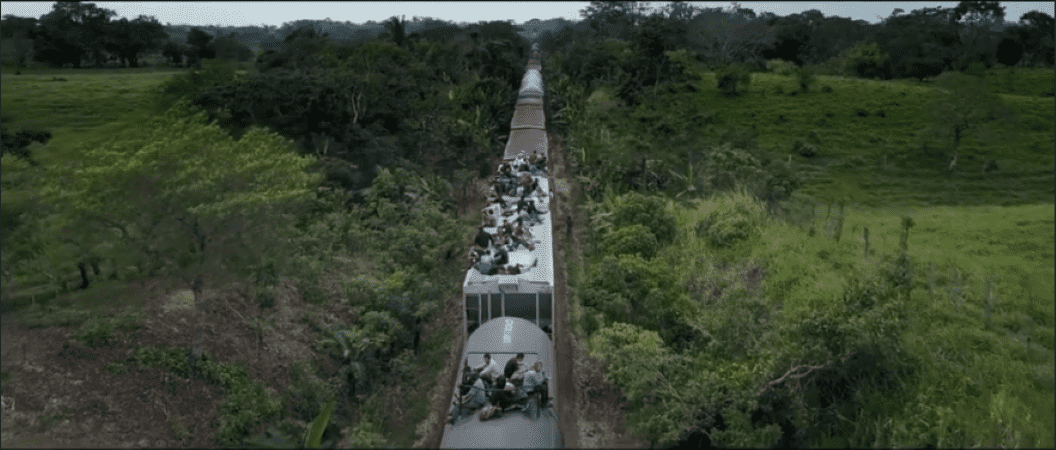'The Trade' Season 2 Premiere Review: Showtime series puts human face to immigration but fails to give context

The shocking images of the drowned three-year-old Syrian boy on the beach, who drowned attempting to reach the Greek island of Kos, encapsulated both the extraordinary risks refugees take to flee their war-torn neighborhoods and also put a face on the humanitarian crisis.
A similar crisis is brewing in America's backyard with hundreds of migrants fleeing from gang violence and poverty from Central American countries like El Salvador, Guatemala, and Honduras to pursue the "American Dream". In the second season of 'The Trade', filmmaker Matthew Heineman attempts to put a human face on the crisis by choosing to focus on the people on both sides of the border. By piecing their stories together, he shows the cycle of Central American migrants coming to the United States and then, being deported back to their home countries.
There is a throwaway mention of how MS-13, the gang that is behind the street violence and gang wars in Honduras, originated in Los Angeles, California, in the 70s and 80s. However, we never get to hear how the large-scale deportations of gang members in the 90s, meant they started recruiting members in their home countries.
This, over time, made MS-13 an international gang, operating with impunity in their own countries and focussed on drugs and weapons running across US borders. For these well-financed gang members, deportations don't matter as much because they have the resources to slip through borders more easily repeatedly compared to poverty-stricken common migrants trying to escape gang violence.
Before the large-scale deportations of criminals, there was no significant gang activity in Central America. By foisting these criminals (through deportations) back to countries that had no resources to properly deal with them, MS-13 was soon able to overwhelm local police and turn entire neighborhoods into their territories, expanding into new ones while expanding its membership.
Heineman provides scant context or statistics like how, along with neighboring El Salvador and Guatemala, Honduras forms part of the "Northern Triangle of Central America", which has been characterized as one of the most violent regions in the world. In 2012, for instance, there were 20 homicides per day in Honduras.
Gangs are one of the only "stable employers" in these countries where free-market policies and de facto approval of a coup regime haven't allowed the domestic industry to grow except as "factory towns" for the US markets which also were hit by the US recession.
Now, in Honduras, for instance, that Heineman focusses on, you have "gang recruits" in their teens signing up for three square meals a day to escape poverty not knowing what they are getting into. If they try to leave, they are killed. Magda, featured in this docu-series, is shown fleeing Honduras with her young daughter, hoping to make it to the United States, after her husband’s execution by MS-13.
The film shows the "caravans" of hundreds of migrants traveling across Mexico on "the Beast", the train that traverses across the country. These women, men, and small children, escaping certain death, are shown pushing through the borders into the US, hoping for peace and opportunities.

Besides Magda, Heineman follows Special Agent Ramirez who leads a Homeland Security investigation into smuggling cells in McAllen, Texas. As someone who looks like the migrants, Ramirez, a fourth-generation American, is empathetic, blaming the "coyotes" and human sex traffickers who he says see humans "as another product" to be shifted across the border. And he is right - only humans, unlike drugs, can fetch repeat profits as long as they are not killed. As one migrant says he will try again and again, each time he is deported, to make his way across the border.
The first episode shows how the migrants can pay upward of $7,500 for the trip across the border after which they are kept in "stash houses" until they can be transported out of jobs where they are little more than slaves.
There is again another a throwaway line about how migrants from India, Bangladesh, and China are also making their way through the borders paying $80,000 per person -- but we are not given the figures of the scale of this type of migration.
But these "facts", without figures or context, give an impression of the borders being overrun by migrants. There is even a clip where hundreds of migrants push into the US by force, overwhelming the police in riot gear at the border trying to push them back.
To put these images into context, here are some figures. In 2014, the U.S. Border Patrol apprehended 90,968 Honduran migrants at the border. That number fell in 2015 to 33,445 and then went up to 52,952 in 2016 and 47,260 in 2017. The number of people detained while traveling with children reached 39,439 in 2017, mostly fleeing violence in their home countries.
The other person in the first episode is the restaurant owner, Victor, in Colorado, who prepares his family for life without him as he awaits his next ICE hearing and possible deportation back to Guatemala. He speaks of coming to The US years ago when border controls were more lax. He is the face of the "good migrant" who wants to be a good citizen. By choosing someone who is an older migrant as the face of a good, productive migrant, Heineman creates a different set of judging parameters between new migrants and the older migrants.
Despite sympathizing with the migrants, the first episode of 'The Trade' Season 2 cherry-picks its data and leaves out the crucial context of this humanitarian crisis that will only balloon because of the broken immigration system.
'The Trade' Season 2 premiered on March 6. The second episode will be aired on March 13.










